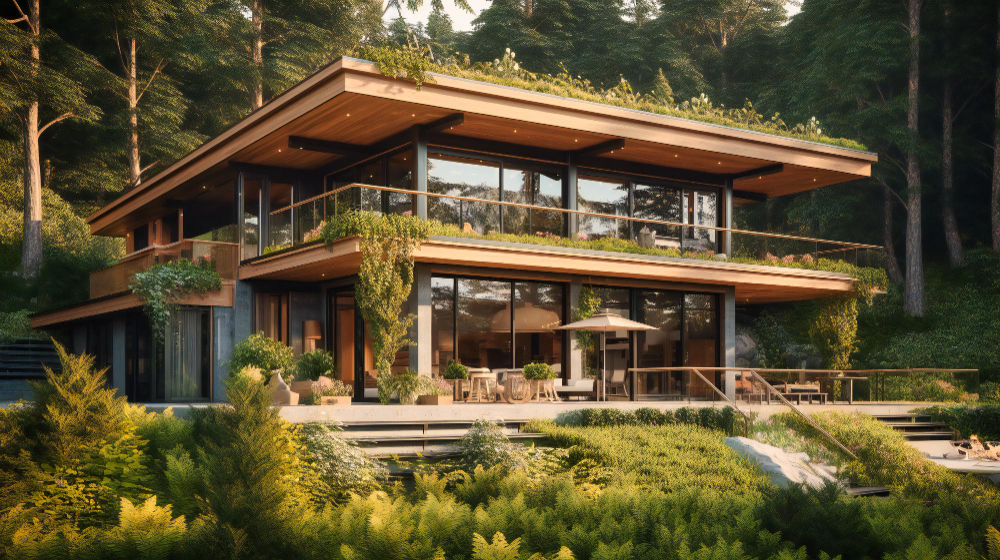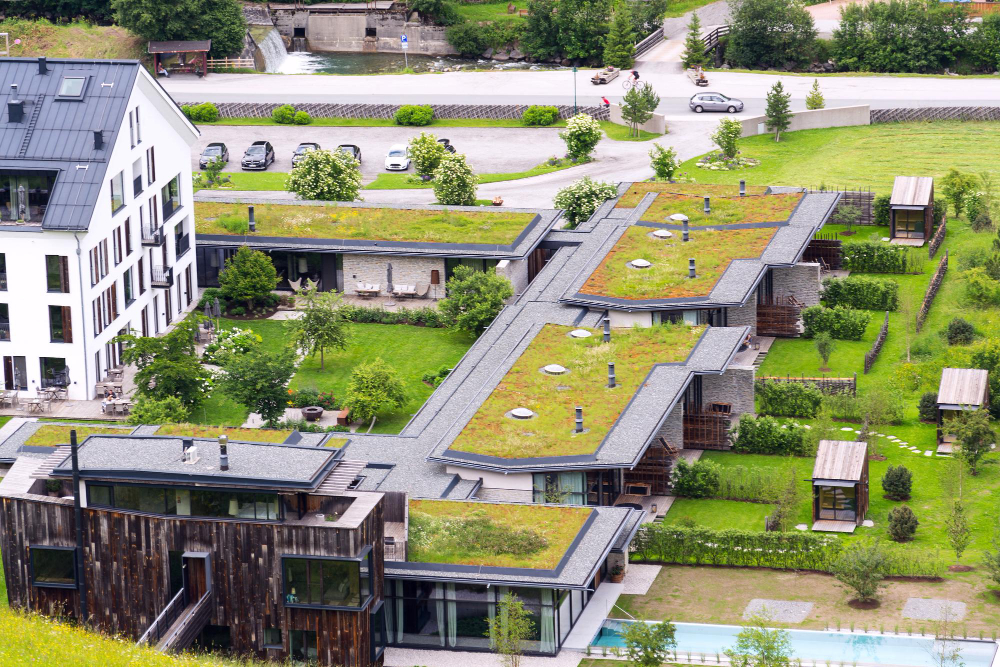Last updated on
Green roofing, a burgeoning trend in architecture and urban planning, offers a tangible solution to mitigate environmental impact. By seamlessly integrating vegetation into building structures, green roofing goes beyond aesthetics, delivering a range of ecological benefits that extend far beyond the rooftop.
So, read on to discover the environmental impact of green roofing, exploring how this innovative approach is reshaping our cities and fostering a more sustainable future.
Energy Efficiency: A Natural Insulator

Green roofs act as natural insulators, regulating indoor temperatures by providing an additional layer of insulation. As suggested by the roofers from this Sarasota roofing company, you should hire experts to help you discover the best options to not only reduce the energy demand for heating and cooling but also minimize greenhouse gas emissions associated with conventional HVAC systems.
By opting for a green roof, you contribute to a substantial decrease in your building’s overall energy consumption, resulting in both cost savings and a lighter ecological footprint.
Stormwater Management
Cities grapple with the challenges of stormwater runoff, causing flooding and pollution. Green roofs, however, function as natural sponges, absorbing and slowing down rainfall.
This prevents overwhelming stormwater runoff, reducing the risk of urban flooding and the strain on drainage systems. By opting for green roofing, you actively participate in bolstering your city’s resilience against extreme weather events, fostering a more sustainable and water-responsible urban landscape.
Biodiversity Boost: Urban Oases

Traditional rooftops offer little to no habitat for biodiversity. In stark contrast, green roofs transform urban spaces into thriving ecosystems. The vegetation on green roofs attracts insects, birds, and other pollinators, fostering biodiversity in the heart of the city.
By choosing green roofing, you contribute to the creation of urban oases that support local flora and fauna, playing a crucial role in preserving biodiversity in increasingly urbanized environments.
Air Quality Improvement: Breathing Easier
Cities often grapple with air pollution, affecting the health and well-being of their inhabitants. Green roofs act as natural air purifiers, trapping and filtering pollutants from the air.
The vegetation on green roofs absorbs carbon dioxide and releases oxygen, contributing to improved air quality. By opting for green roofing, you actively participate in creating healthier urban environments, where the air you breathe is cleaner and more conducive to overall well-being.
- Particulate Matter Filtration: The vegetation on green roofs captures and filters particulate matter, including dust and pollutants, preventing them from being released into the atmosphere. This filtration process leads to a noticeable reduction in the concentration of airborne particles, promoting cleaner air for city dwellers.
- Reduced Urban Heat Island Effect: Green roofs help mitigate the urban heat island effect, a phenomenon where urban areas experience higher temperatures than surrounding rural areas due to human activities and extensive impervious surfaces. By cooling the air and surfaces through evapotranspiration, green roofs contribute to a more temperate urban environment, reducing the formation of ground-level ozone and other pollutants associated with high temperatures.
Carbon Sequestration
Green roofs play a pivotal role in combating climate change by sequestering carbon dioxide from the atmosphere. The vegetation on these roofs absorbs carbon during photosynthesis, locking it away in plant tissues and soil.
This natural carbon sequestration helps mitigate the urban heat island effect, reducing the overall carbon footprint of cities. By choosing green roofing, you actively contribute to the fight against climate change, making a tangible impact on carbon levels in the urban environment.
Extended Roof Lifespan: Sustainable Longevity
Beyond their environmental benefits, green roofs also enhance the durability of the structures they cover. The vegetation layer shields the roofing materials from the sun’s harsh rays, temperature fluctuations, and weathering.
This protective layer extends the lifespan of the roof, reducing the need for frequent replacements and the associated environmental costs of manufacturing and disposing of roofing materials. Investing in green roofing not only promotes sustainability but also offers a practical and economic advantage by minimizing long-term maintenance and replacement expenses.
Community and Aesthetic Appeal
Green roofs contribute to creating aesthetically pleasing urban environments, providing communal spaces for residents and workers. These green spaces offer recreational areas, promote social interaction, and improve the overall quality of life in densely populated cities.
By incorporating green roofs into urban planning, you help build communities that prioritize both environmental sustainability and human well-being. The visual appeal of green roofs also adds to the architectural charm of buildings, enhancing the overall character of the cityscape.
The environmental impact of green roofing is multifaceted, encompassing energy efficiency, stormwater management, biodiversity conservation, air quality improvement, carbon sequestration, extended roof lifespan, and community appeal.
By choosing green roofing, you actively participate in reshaping urban landscapes, fostering sustainability, and mitigating the detrimental effects of climate change. As we navigate the challenges of an increasingly urbanized world, embracing green roofing emerges not only as an environmentally responsible choice but as a holistic approach to creating resilient, vibrant, and ecologically balanced cities.
Table of Contents




